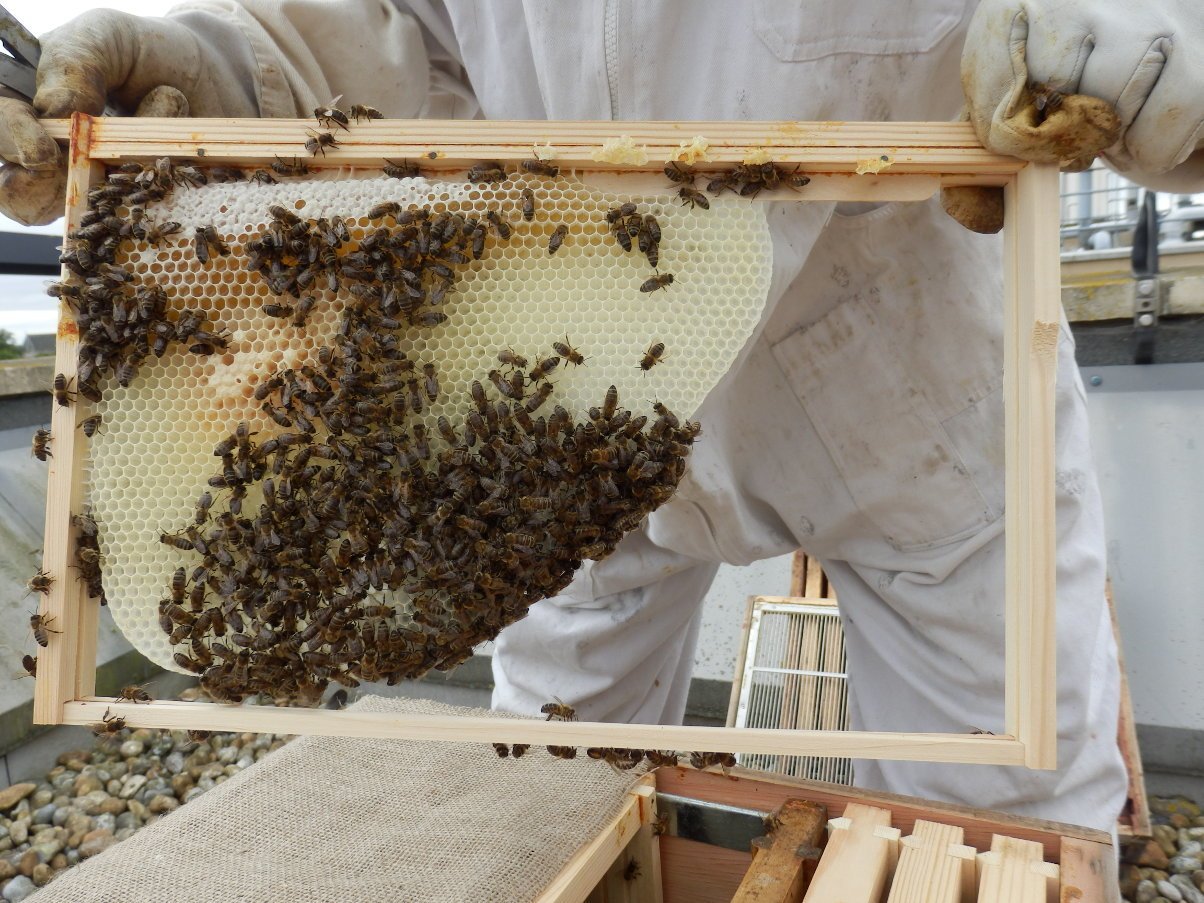
Foundation is a layer of wax which is placed in a frame. It is printed with hexagonal cell guides. The bees build their comb from it into the spaces between the frames. As far as I know nearly everyone who uses framed hives uses foundation.
Foundation should encourage a more regular comb shape and get the bees to build the comb sooner than they might in an empty cavity. Cell width can be forced by printing the hexagons at different sizes. There's been some discussion about what the 'correct' width should be and the advantages of different sizes. I'm not going to discuss that here. The crucial advantage for harvesting beekeepers is that wired comb is supported and won't burst when spun in a radial extractor.
Foundation is produced from beeswax gathered from many hives. It's been shown that chemical contaminants (ie treatments for Varroa etc) are spread readily from foundation around the hive (citation needed). Since my hives are treatment free I wanted to exclude chemicals which could leach from foundation. I also want the bees to make comb which suits their needs.
I decided not to use foundation. The main reason was to find out whether, and how, it would work.
Bees are said to 'prefer' a sharp edge to build from. I modified my frames by nailing in 2 wide lolly sticks where the foundation would be fixed at the top of the frame (see image). The modification is very simple and requires no woodworking besides basic nailing.
The results seem good, although the sample size is very small. I've only done this for the brood area in 2 hives. The first (Hive D) is very vigorous and produced excellent, straight combs. The second (Hive B) was a much smaller nest, shaped like a ball. The outer edges of the comb bulged to form a sphere and so each layer was progressively distorted. Hive C was inconclusive because they didn't build into a cavity in the same way.
I've used these frames in Hive A in supers with good success. I've spun foundation-less and extracted honey without bursting the comb. The precaution is to spin gently on each side before spinning at full speed. This nearly doubles the time spent spinning each comb, and so it is unlikely to work for high volume extraction. I use a tangential extractor. I haven't tried this in a radial extractor.
I will continue to use frames without foundation. I'd call my experience a success even allowing for the small sample size.